13 Reasons Why Everyone Is So Obsessed With 'Breaking Bad'
The concept of the show sounds ridiculous, but it's brilliant.

You watch the show's main character slowly change from the protagonist to the antagonist.
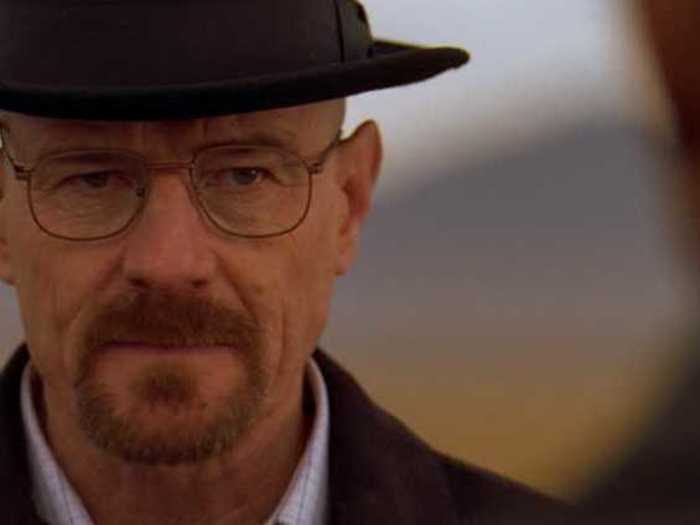
We can't think of another television series that introduces a sympathetic main character who slowly becomes diabolical, greedy, self-centered, and cruel.
That's what happens with Walt as we watch the drug business turn a timid, stumbling chemistry teacher into an overly confident, malevolent kingpin — aka Heisenberg — who wouldn't hesitate to put a bullet through someone's head. Even as Walt becomes increasingly violent, however, because of the viewer's attachment with the chem teacher from the start, it's easier to sympathize with him as opposed to other characters, like Walt's wife Skyler and his DEA brother-in-law Hank Schrader who continuously try to bring him down.
If Walt's character was introduced as a villain from the start, it may have been more difficult for viewers to turn a blind eye, or back up many of his actions.
The tumultuous relationship between Bryan Cranston and Aaron Paul's characters.

Walt and Jesse have a love-hate relationship as the older teacher easily and often gets agitated and frustrated with the younger, inexperienced chemistry flunk.
As the series progresses, the viewers see the two develop a sort of father-son bond, with Walt becoming much closer to Jesse than his actual son, Walt Jr. (He once accidentally refers to his own son accidentally as Jesse.) Jesse becomes very protective of his former teacher when others threaten his life.
The chemistry translates off screen as well.
Anytime these two head out in public together, the pair always deliver a series of must-see photos.
Also, if you've watched the gag reels for "Breaking Bad," it's easy to see just how well the two get along. Paul has said that Cranston is a giant prankster on set.
Scene stealer Giancarlo Esposito.
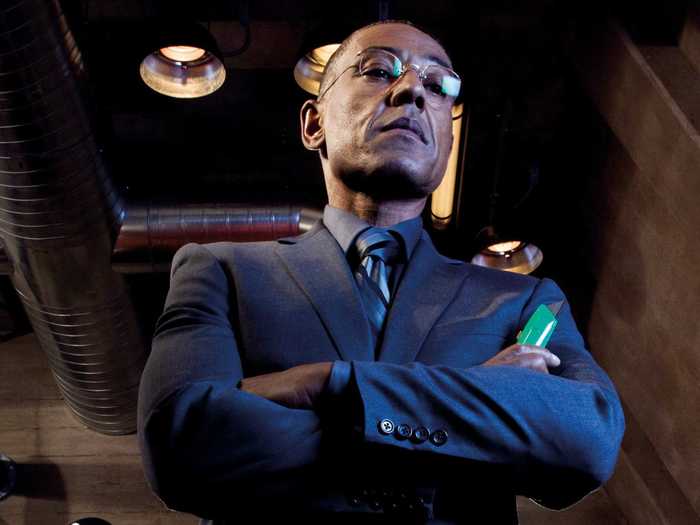
Esposito plays complacently calm, cool, collected, and cut-throat Gustavo Fring, a drug distributor for the Mexican cartel who hides in plain sight as the owner of a popular deep-fried chicken food chain and town socialite.
Every time the fan favorite appears on screen he's a scene stealer — [Spoiler] slicing the throat of an employee quietly and quickly (note the box cutter in his right hand) and killing the entire Mexican drug cartel with poison [Spoiler]
The man is tactful and organized — everything Walter White's careless chem teacher isn't — so it was a surprise at the end of season four when [Spoiler]his character was dramatically — and shockingly — outsmarted by White and killed off. [Spoiler]
Last year, Esposito was nominated for a Primetime Emmy for outstanding supporting actor in a drama series only to lose out to fellow co-star Aaron Paul. Fring has easily landed as one of the best television villains of all time on multiple lists.
The show can go from lighthearted and humorous ...
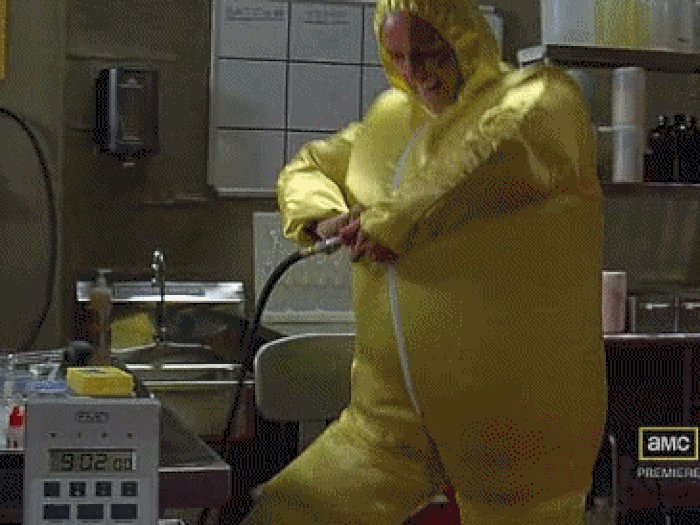
During season 3, Pinkman's use of "b----" became a fan favorite with plenty of mashups being produced across the web highlighting favorite uses like "Roll me further, b----" along with every occurrence of the word on the show.
The line has become so popular actor Aaron Paul told Conan O'Brien he gets asked by fans to say it to them. He also revealed his favorites include "Gatorade me, b----" and "This is my own private domicile, b----."
Plus, the witty one-liners and observations of crooked "criminal" lawyer Saul Goodman (Bob Odenkirk) liven the show's grittier moments.
His character has become so popular there's talk of a spinoff in the works.
... to menacingly dark in five seconds.
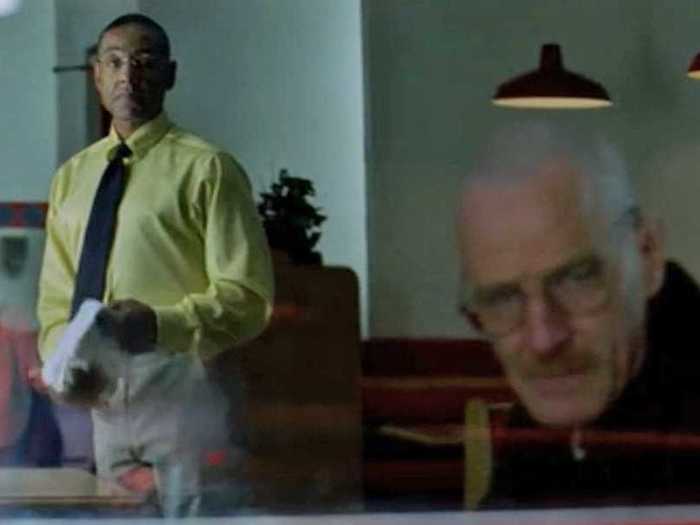
White and Fring have delivered some of the most terrifyingly nail-biting moments on television.
In a moment near the end of season 4, episode 11, Gus takes matters to the extreme, threatening:
[Spoiler] "If you try to interfere, this becomes a much simpler matter. I will kill your wife. I will kill your son. I will kill your infant daughter." [Spoiler]
The line is enough to make anyone's stomach drop, as the viewer grasps the danger Gus presents.
One of the series' most popular monologues occurs when Walt goes on a rant to wife Skyler, confidently telling her that he's the only one people should fear. If you know anything about "Breaking Bad," this is one of the most common and popular lines of the series.
"I am not in danger, Skyler. I am the danger! A guy opens his door and gets shot and you think that of me? No. I am the one who knocks!"
Juxtaposed with the series' humor, the two make for dynamic TV.
Excellent montages.
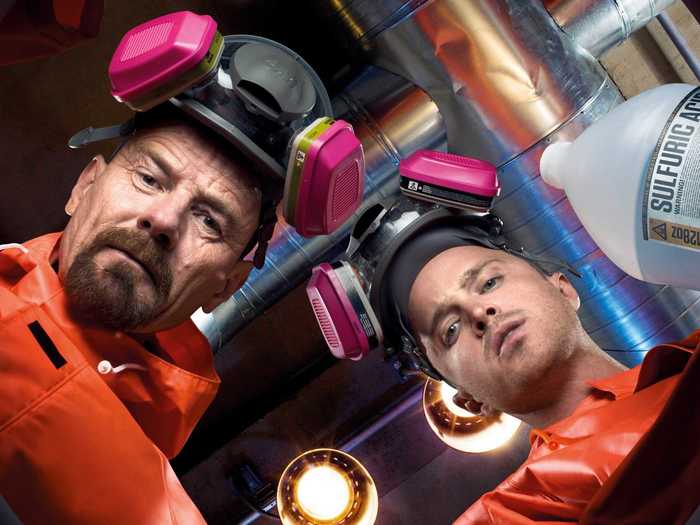
Other than the intense drama, creator Vince Gilligan delivers a series of beautifully crafted and choreographed montages set to music that have become a staple of the show.
Whether showing characters selling meth, making meth, an RV getting destroyed, or Jesse bored on a car ride or in a lab, Gilligan breaks up simple actions into visually appealing sequences.
Arguably one of the best montages is "Crystal Blue Persuasion" from season 5 showing Walt cooking with new partner Todd.
It's full of gut-wrenching surprises that catch us off guard.
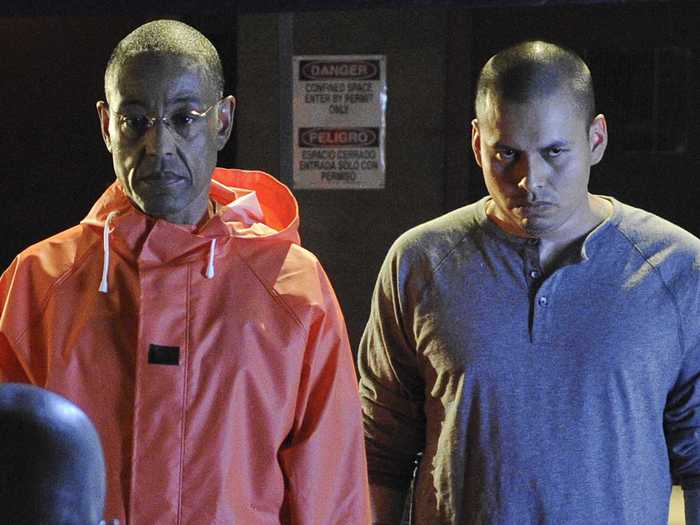
Many shows wait until the episode's final minutes to deliver suspense.
"Breaking Bad" isn't afraid to drop unexpected character deaths anywhere in an episode.
There's almost always a payoff at the end of every episode.
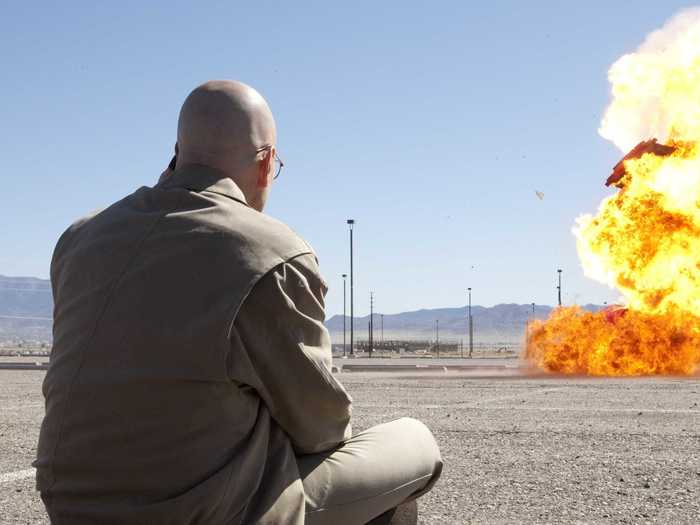
Unlike other series that can go an entire episode without much plot progression (we're looking at you "Game of Thrones" and "The Walking Dead"), it's rare that "Breaking Bad" doesn't end on a cliffhanger.
The final 12-15 minutes of nearly every episode usually has a huge plot turn.
This is both good and bad as the show is always a must-watch, but also becomes incredibly difficult to stop viewing.
If you're binge-watching, "Breaking Bad" becomes as addictive as the blue meth Walt's buyers can't go without. (We recommend stopping in the middle of episodes.)
The show effortlessly teaches you about science.
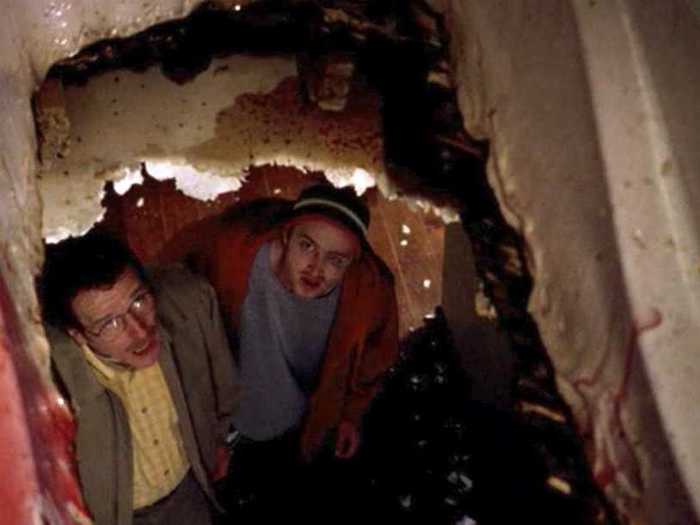
Not many shows can be both popular and informative.
If you're a fan of the series you know sulfuric acid can eat through ceramic tile (above), but not polyurethane containers, that the nearly untraceable poison ricin can be produced from castor beans, and that the lily of the valley plant is pretty deadly.
Since the main character is an overly qualified chemistry teacher, he uses science throughout the show to solve a lot of problems — and to aid in illegal activities as the series progresses.
In season 1, Walt [Spoiler]destroys much of the headquarters of a local drug dealer after he[Spoiler] tosses a piece of fulminated mercury.
Later, when he and Jesse are stranded in the desert, Walt builds batteries out of nothing more than coins, nuts and bolts, break pads, sponges, plastic containers, copper wire, and potassium hydroxide.
The small science lessons have led fans online to speculate and joke that the entire point of the show is not to follow White's mid-life crisis, but to show the great lengths to which "Mr. White" would go to educate his former student.
With that in mind ...
It's multilingual, making the show accessible for more demographics.
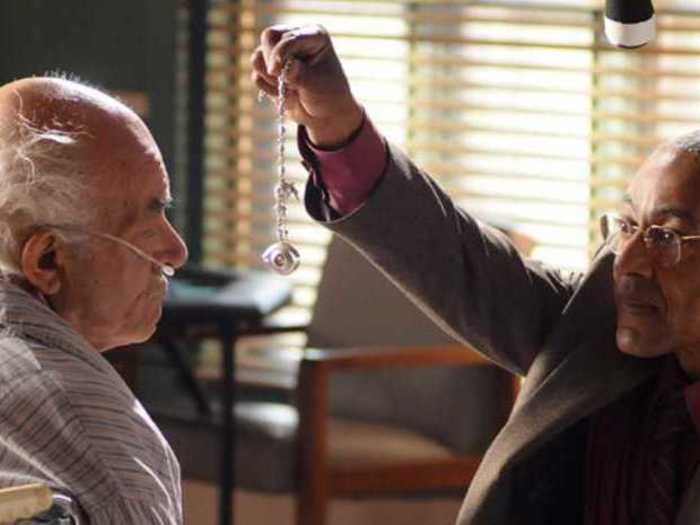
Because the show heavily revolves around the Mexican drug cartel, a lot of "Breaking Bad" is in in Spanish.
Especially in season 4, Esposito's character often transitions back and forth between Spanish.
While most translations are seen on the screen, some dialogue is left uncaptioned, leaving the show open for native Spanish speakers or those who understand the language.
That knowledge doesn't go unrewarded.
Anyone who knows simple Español probably got a good chuckle when Walt and his lawyer Saul referred to character Hector Salamanca (above) as Tio Salamanca after hearing a relative refer to the man as such. Tio, of course, means uncle in Spanish.
The fine attention to character and plot detail.
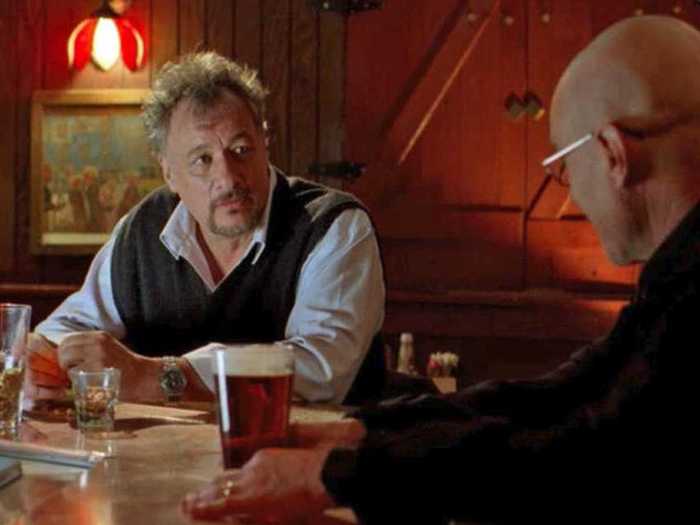
Sometimes a show will throw in a minor side character who will serve their purpose for a few episodes or season and then leave without another thought.
Gilligan will often bring back characters, old storylines, and items briefly shown, for eagle-eye viewers.
A little boy may be introduced once in one season. At the time, his cameo may not seem noteworthy, but when he turns up two seasons later, the viewer feels rewarded for being introduced to him in the first place.
Another great use of detail is when Donald (above left) is introduced in season 2. His minor presence turned out to be a significant role in an overarching storyline of the season.
The show constantly forces you to think about the direction of the current episode and overall series narrative.
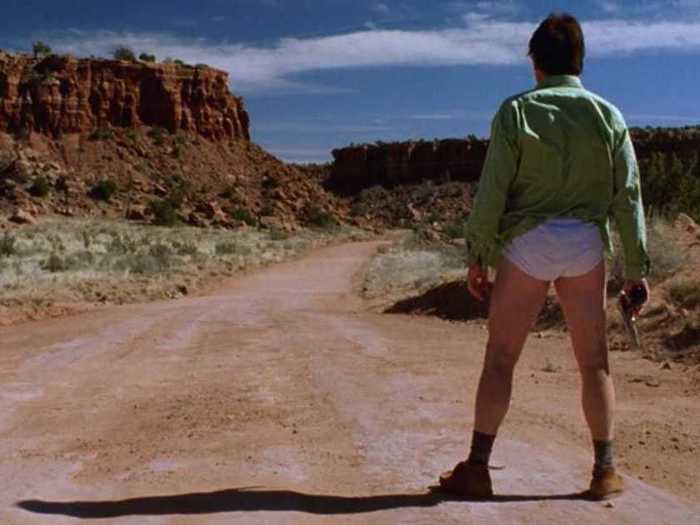
Much like J.J. Abrams' "Lost," Gilligan likes to play with ambiguous flashforwards and flashbacks in the opening of episodes to capture the viewer's attention. They'll usually pop up again later in the same episode or season with significant value.
The first time we see Walt in the pilot episode, he's frantically driving an RV in the middle of the desert with an unconscious passenger and two bodies in the back. He's wearing nothing but his underwear. The viewer is left baffled, but by the episode's end, we know how and why he arrived in such a state.
Now, check out photos of the cast at the "Breaking Bad" premiere.

Popular Right Now
Popular Keywords
Advertisement